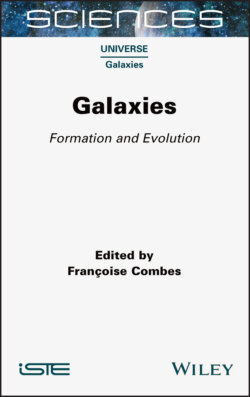Читать книгу Galaxies - Группа авторов - Страница 20
1.9. Morphology of interacting and merging galaxies
ОглавлениеInteracting and merging galaxies make up about 2–4% of nearby galaxies (Knapen and James 2009) and are often unclassifiable in any standard Hubble-based morphological bins. Figure 1.23 shows several examples, all of which are classified as Pec (merger) in the CVRHS system. Distorted shapes, tidal tails, sharp edges (“shells” or “ripples”; e.g. Schweizer and Seitzer 1988), multiple nuclei, and in some cases enhanced star formation characterize these objects. Although major mergers of two spiral galaxies have been thought to generally lead to an elliptical galaxy as a remnant (e.g. Schweizer 1982), more recent numerical studies have shown that a disk galaxy can also be a remnant of such mergers (Athanassoula et al. 2016).
Figure 1.23. Examples of interacting and merging galaxies
The types of rings in normal galaxies that define inner, outer and nuclear varieties are likely features that result from internal dynamics (section 1.12). Figure 1.24 shows examples of the extremely rare types of ring-like features that likely result from a cataclysm, such as a galaxy interaction or encounter. Collisional ring galaxies (RGs; upper frames in Figure 1.24) are one type of cataclysmic ring; these are thought to result from a head-on collision between a disk galaxy and a companion (Appleton and Struck-Marcell 1996). Polar ring galaxies (PRGs; lower frames in Figure 1.24) are a second type; these are thought to originate from the disruption of a small satellite galaxy along a polar orbit around a more massive disk galaxy (Schweizer et al. 1983). None of the examples of this type of feature shown in Figure 1.24 are certain cases. The possible PR feature in NGC 2918 is very faint but favorably oriented nearly edge-on (Whitmore et al. 1990). The possible case in NGC 4247 may be nearly face-on and less clearcut.
Figure 1.24. Possible examples of cataclymic ring galaxies. Top row: collisional ring galaxies. Bottom row: polar ring or inclined ring galaxies
